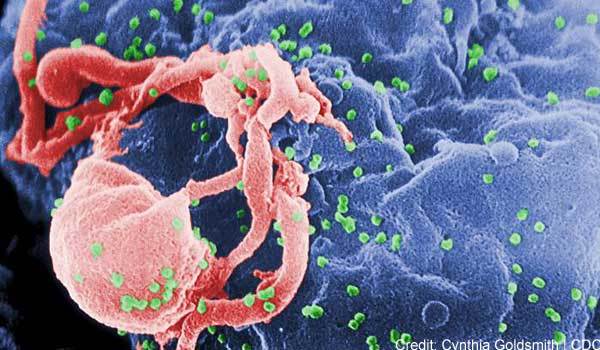AIDS Slower to Develop in People Infected with 2 HIV Types

Becoming infected with both of the two main types of HIV actually slows the progression of the disease, a new study says.
In the study, people infected with HIV-1 and HIV-2 took three years longer on average to show symptoms, compared with people infected with only HIV-1.
The slowest disease progression was seen in people who were infected with HIV-2 before becoming infected with HIV-1, the researchers said.
HIV-1 is more common and more virulent than HIV-2, which is confined largely to West Africa.
The findings suggest that HIV-2 infection hinders the advancement of HIV-1 disease, and future studies of exactly how this might work could aid in the development of HIV-1 vaccines or other therapies, the researchers said.
While nearly everyone infected with HIV-1 eventually develops full-blown AIDS, only 20 to 30 percent of those infected with HIV-2 develop AIDS, the researchers said. In West Africa, up to 3.2 percent of people are estimated to be infected with both HIV-1 and HIV-2.
Previous studies in cells have suggested HIV-2 may inhibit HIV-1 progression, but rigorous studies investigating the effect in people have not been conducted.
Sign up for the Live Science daily newsletter now
Get the world’s most fascinating discoveries delivered straight to your inbox.
In the new study, Joakim Esbjörnsson of Lund University in Sweden, and colleagues analyzed information from members of the police force in the West African country Guinea-Bissau between 1990 and 2007. Participants periodically gave blood samples, which were tested for HIV infection.
During the study period, 223 participants were infected with HIV-1, and 32 of these people also tested positive for HIV-2.
People infected with only HIV-1 showed symptoms of AIDS after 5.6 years, on average. Those infected with HIV-1 and HIV-2 showed symptoms after 8.6 years.
Participants with dual HIV infection also had higher levels of immune cells called CD4+ T-cells, reflecting a slower rate of disease progression, the researchers said.
It's not clear how HIV-2 could interfere with HIV-1 disease progression, the researchers said, but it's possible the immune responses to HIV-2 may also play a role in controlling HIV-1.
Work conducted by the researchers suggests this inhibitory effect occurs early in HIV infection, Esbjörnsson said.
If researchers can figure out exactly how the inhibitory effect works, and how to trigger it, "There is a great potential that these mechanisms can be used as targets and aid in the development of new HIV interventions and vaccines," Esbjörnsson told MyHealthNewsDaily.
Although the work is preliminary, it is even possible that components of HIV-2 could be useful in an HIV-1 vaccine, Esbjörnsson said.
The study is published today (July 19) in the New England Journal of Medicine.
Pass it on: One type of HIV may interfere with the progression of the other.
This story was provided by MyHealthNewsDaily, a sister site to LiveScience. Follow Rachael Rettner on Twitter @RachaelRettner,or MyHealthNewsDaily @MyHealth_MHND. We're also on Facebook & Google+.

Rachael is a Live Science contributor, and was a former channel editor and senior writer for Live Science between 2010 and 2022. She has a master's degree in journalism from New York University's Science, Health and Environmental Reporting Program. She also holds a B.S. in molecular biology and an M.S. in biology from the University of California, San Diego. Her work has appeared in Scienceline, The Washington Post and Scientific American.









